pa
Do you have any thoughts on this post?
Updates will help reduce conflict between energy development and our sporting traditions
The Bureau of Land Management recently released a set of proposed changes to its oil and gas leasing program. The reforms would apply to hundreds of millions of acres of federal lands coveted by hunters and anglers. Fully 90 percent of the 245 million acres of federal land under BLM authority are currently available for oil and gas leasing and development, with more than 26 million acres under lease in 2021.
In an effort to address potential impacts to wildlife habitat and public access, sportsmen and sportswomen have been working to promote responsible approaches to energy development for decades. While the debate over domestic energy policy can be heated, it is hard to argue the fact that many of BLM’s existing rules governing oil and gas leasing on public lands are at least half a century old, and they have often put oil and gas leasing and development at odds with other resource values. The BLM’s proposed reforms will modernize its onshore oil and gas leasing regulations to help reduce the conflict between oil and gas development and other important multiple-uses, including hunting, fishing, and wildlife habitat.
The proposed rule would help reduce conflict, in-part, by cutting down on the practice of speculative leasing so that those lands can instead be managed for other uses—like habitat conservation to support abundant wildlife populations. Speculative leasing occurs when an oil and gas company leases land with no real potential for economically viable oil and gas production—preventing BLM from being able to effectively manage that land for other important multiple-uses that may not be compatible with oil and gas. The rule addresses this by prioritizing leasing in places with existing oil and gas infrastructure or high production potential. The proposed rule would also implement the Inflation Reduction Act’s mandated reforms of the oil and gas leasing program, ensuring taxpayers get a fair return for the development of public minerals and ensuring responsible development when public land oil and gas resources are leased to private companies.
The Mineral Leasing Act of 1920 requires federal regulators to ensure adequate bond coverage before oil and gas companies can drill on federal land. The proposed rule would additionally reform the bonding rates that oil and gas companies must post in order to ensure public lands are cleaned up when companies abandon wells—a provision that was not included in the Inflation Reduction Act but has long been supported by several organizations in the hunt-fish community.
Specific provisions of the proposed rule include:
Bonding requirements: The rule proposes to increase the minimum lease bond amount (the upfront fee to ensure eventual well cleanup) to $150,000, and the minimum statewide bond to $500,000. The rule also proposes to eliminate nationwide and unit bonds. The existing lease bond amount of $10,000—established in 1960—no longer provides an adequate incentive for companies to meet their reclamation obligations, nor does it cover the potential costs to reclaim a well should this obligation not be met. The current, outdated bond requirement increases the risk that taxpayers will end up covering the cost of reclaiming wells in the event the operator refuses to do so or declares bankruptcy. The Department of the Interior has made available more than $1 billion in the past two years from Bipartisan Infrastructure Law funding to clean up orphaned oil and gas wells on federal, state, and private lands. This proposed rule aims to prevent that burden from falling on the taxpayer in future years.
Protecting Wildlife and Cultural Resources: The rule would help steer oil and gas development away from important wildlife habitat or cultural sites, and toward lands with existing infrastructure or high production potential.
Royalty rates: Proposed changes to royalty rates reflect provisions in the Inflation Reduction Act. Royalty rates for leases issued for 10 years after the effective date of the Inflation Reduction Act are 16.67 percent. After August 16, 2032, the rate of 16.67 percent will become the minimum royalty rate.
Minimum bids: The proposed rule includes a provision of the Inflation Reduction Act that increased the national minimum bid from $2 per acre to $10 per acre. The minimum acceptable bid is important because it establishes the starting bid at the BLM’s oil and gas lease auctions. A fair rate of $10 will help ensure that only lands with actual development potential are leased at auction.
Base, or minimum, rental rate: Pursuant to the Inflation Reduction Act, for leases issued in the 10 years after its enactment, the proposal includes a rental of $3 per acre, or a fraction thereof, per year during the first 2-year period beginning upon lease issuance, $5 per acre per year, or a fraction thereof, for the following 6 years, and then $15 per acre, or a fraction thereof, per year thereafter. After August 16, 2032, those rental rates will become minimums and are subject to increase.
Expressions of Interest: The Inflation Reduction Act established a new fee for expressions of interest. The proposed rule includes that fee, which is $5 per acre, or a fraction thereof. Requiring a fee for Expressions of Interest will help reduce speculative leasing.
Final Thoughts and How to Get Involved
We understand that most Americans still drive gasoline-powered vehicles and don’t want to be hit at the pump. These updates will not impact domestic energy production but will ensure taxpayers receive a fair rate of return on that development, while reducing conflict between energy development and our sporting traditions.
The proposed Oil and Gas Rule, in concert with other ongoing BLM efforts including the Public Lands Rule, the Wind and Solar Rule, and updating the Western Solar Plan, is an important part of a comprehensive approach to managing public lands to bring energy development into the 21st century, while maintaining robust wildlife populations, access, and opportunities for future generations of hunters and anglers. You can find these documents on BLM’s website at blm.gov.
We support these efforts and encourage you to get involved. BLM has announced a 60-day public comment period on the proposed Oil and Gas Rule and will be holding a series of public meetings. Look for future communication here at trcp.org and on our social media for updates on the rulemaking.
Photo Credit: Josh Metten
TRCP and the Wyoming chapter of Backcountry Hunters & Anglers will organize six sessions this August
The Theodore Roosevelt Conservation Partnership and Wyoming Chapter of Backcountry Hunters & Anglers have announced a series of six public land access listening sessions throughout Wyoming slated for early August.
The recent corner crossing case that drew national attention to Wyoming has again sparked controversy around public access. A federal judge ruled in favor of four Missouri hunters, which means they did not trespass when crossing corners on their 2020 and 2021 hunting trips. Despite this victory for public land access, the legality of corner crossing remains uncertain.
TRCP and BHA are taking steps to be proactive about improving access to inaccessible public land in ways that can be broadly supported, while respecting private property rights. The organizations encourage the public to attend these sessions to share their personal experiences and ideas about improving access to public lands.
The event details are as follows:
August 1 – Pinedale, WY, Wind River Brewing, 6pm, register here
August 2 – Buffalo, WY, Bond’s Brewing Company, 6pm, register here
August 3 – Cheyenne, WY, Blacktooth Brewing, 6pm, register here
August 8 – Evanston, WY, Suds Bros Brewing, 6pm, register here
August 9 – Rock Springs, WY, Square State Brewing, 6pm, register here
August 10 – Casper, WY, Blacktooth Brewing, 6pm, register here
“Wyoming has over 4 million acres of inaccessible public land, and it is important that we identify collaborative solutions to improve access, while respecting private property rights,” said Sabrina King, BHA’s Wyoming chapter lobbyist.
“The value of public lands in Wyoming is incredible,” said Alex Aguirre, Wyoming community partnerships coordinator for the TRCP. “These millions of acres have brought residents together for years to enjoy and cherish. That’s why we hope you can join us for an evening to discuss the importance of accessing these precious acres.”
The sessions will include a short presentation followed by a Q & A regarding public land access in Wyoming. Interested parties should register for an event through the corresponding links above.
Photo Credit: Josh Metten
If you’ve ever attended an ICAST trade show in Orlando, you know that there is A LOT going on, with a who’s-who of sportfishing-related businesses and conservation organizations offering an incredible array of booth displays, presentations, exhibits, and events. So TRCP was flattered to have such high attendance at our Conservation Summit last week, where experts covered fisheries management topics that included the incorporation of habitat and water quality improvements into fisheries management, the loss of retired oil rigs-turned-reefs, Florida Everglades restoration efforts, proper use of descending devices for reef fish releases, and Gulf of Mexico fisheries management updates.
We aren’t able to fully sum up all the panel discussions and scientific presentations covered for five topics that spanned two days, but here are some top themes that emerged at this year’s Conservation Summit.
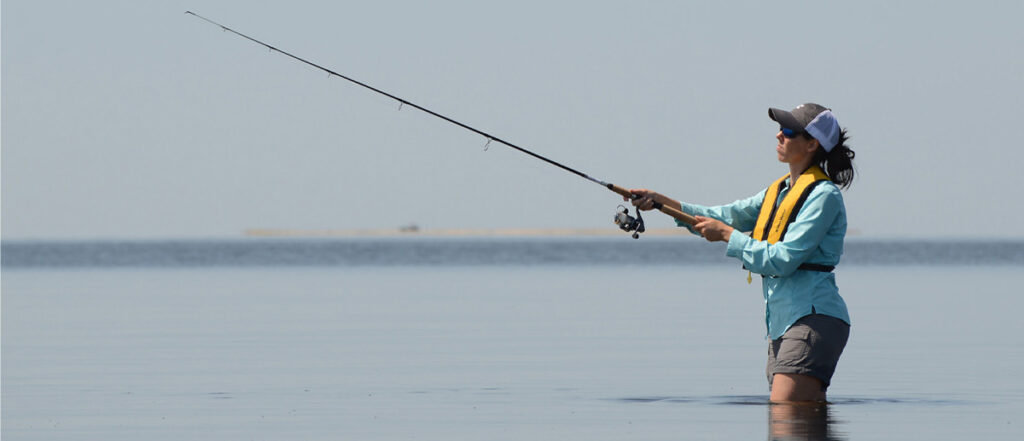
From the imminent planned removal of hundreds of flourishing artificial reefs in the Gulf of Mexico to the loss of critically important seagrass and mangrove fish habitats, there are many issues to tackle to improve the health of coastal, inshore, and offshore marine habitats.
“We don’t have a lot of time left, so we’re going to be pursuing this pretty hard,” said Chris Horton, fisheries policy director for the Congressional Sportsmen’s Foundation, of the problem of Gulf oil rigs being removed at a breakneck pace. Horton said he hopes a congressional bill will be introduced soon to address the reef removal problem.
Water quality concerns are also a major challenge facing fisheries managers. A good example highlighted at the summit is a threat sometimes generated far from the ocean: municipal wastewater that, even after standard treatment and eventual flow into marine environments, carries a toxic cocktail of pharmaceuticals that are absorbed by saltwater species.
“We found pharmaceuticals in just about every fish we tested,” said Dr. Aaron Adams, director of Science and Conservation for the Bonefish & Tarpon Trust, of research on the presence of these drugs in various fish species. Adams said that these chemicals can change the feeding, migration, and predator avoidance behaviors of valuable sportfish species like redfish and bonefish, impacting survival and reproduction with population-level consequences. One hundred percent of the Florida Keys bonefish sampled in a Florida International University study had pharmaceuticals present in their tissues, with an average of seven pharmaceuticals detected per fish.
The good news is that this sort of pharmaceutical release problem can be addressed by improving wastewater treatment facilities, which Switzerland, Sweden, and other countries have successfully accomplished.
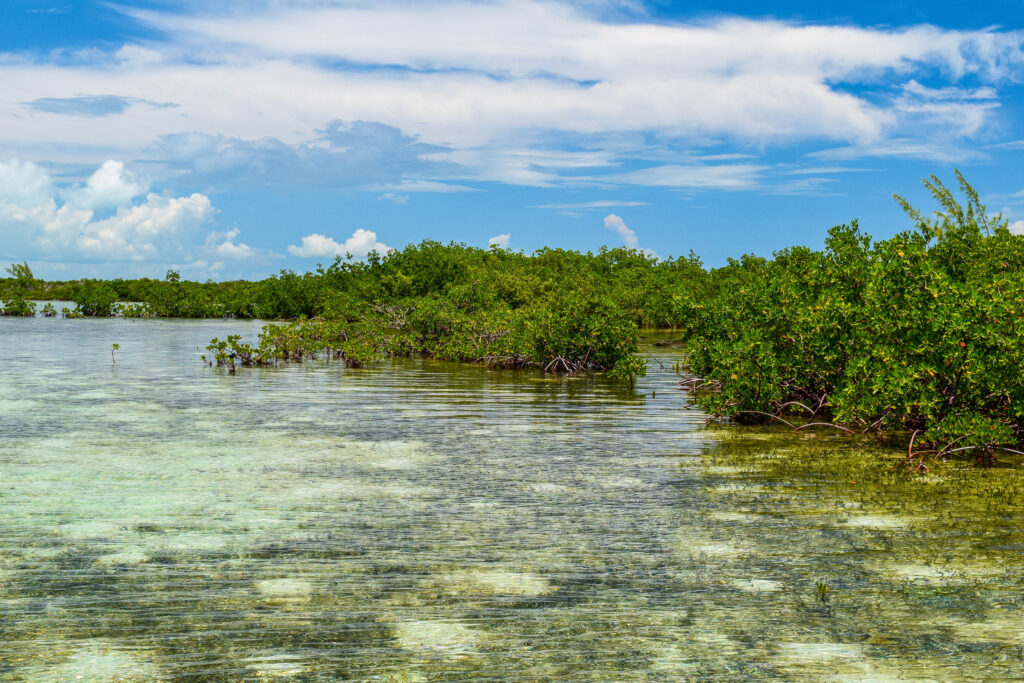
Partnerships and coalitions form the foundation of how TRCP gets things done. The necessity for teaming up with other organizations and agencies to accomplish conservation goals was frequently stated at the ICAST Conservation Summit, including in presentations by representatives of the National Oceanic and Atmospheric Administration and Florida Fish and Wildlife Conservation Commission (FWC). Representatives for the agencies spoke about their collective wetland/fish habitat creation and improvement efforts at the Robinson Preserve, a 487-acre salt marsh preserve located on the south end of Tampa Bay.
“The Robinson Preserve is a shining example of how each of these partners can work together to restore disturbed farmland back to healthy wetland habitat that sportfish will thrive in,” said Jessica McCawley, FWC director of the Division of Marine Fisheries Management.
What was previously degraded coastal farmland at the preserve is being converted to wetlands that include oyster reefs, a sportfish nursery, and mangrove islands. NOAA was recognized at the summit as a partner to FWC in the Robinson Preserve efforts, and also by the Florida Department of Environmental Protection for its assistance on other projects.
“We don’t do anything by ourselves,” said Carrie Selberg Robinson, NOAA Fisheries director of the Office of Habitat Conservation. “We get things done by working together.”
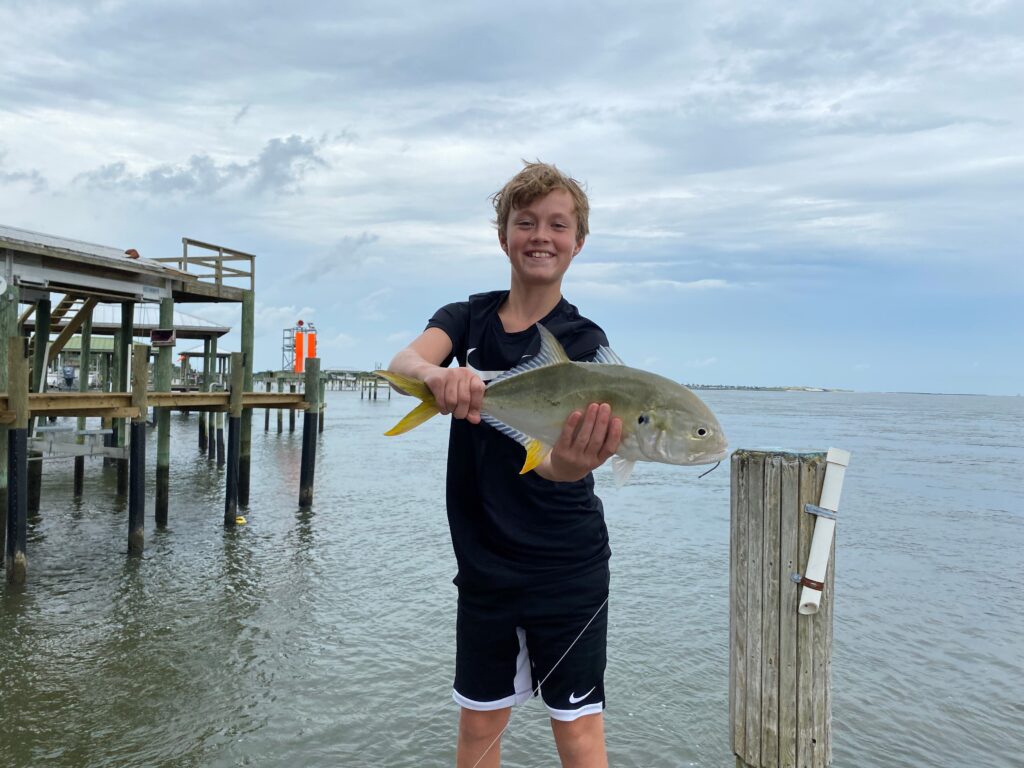
Florida state agencies have been heavily engaged in addressing water quality concerns and aquatic preserves protection, both of which will benefit saltwater fish populations. The importance of good science came up often in these and other summit presentations.
The Florida Department of Environmental Protection discussed the substantial investments it is making in Everglades and water quality improvements. Alex Reed, FDEP director for the Office of Resilience and Coastal Protection, detailed how the Aquatic Preserve Program is protecting 2.6 million acres of submerged resources, such as seagrass beds, for future generations. And her colleagues discussed how efforts that have been focused largely on wastewater and sewage treatment to protect Florida water supplies will now begin to focus more on stormwater and agricultural runoff that directly impacts marine ecosystems. Substantial investments are now going into Everglades and other water quality improvements.
“We’re trying to make sure science has a seat at the table as we move forward,” said Shawn Hamilton, FDEP secretary.
The need to base management decisions on sound science was likewise reflected by Florida Fish and Wildlife Conservation Commission presenters, who related it to their work dedicated to improving inshore fish habitat.
“Successful fisheries management requires a good understanding of the status and health of our fisheries, which means collecting as much data as possible from as many reliable sources as possible,” said Jessica McCawley, FWC director of the Division of Marine Fisheries Management.
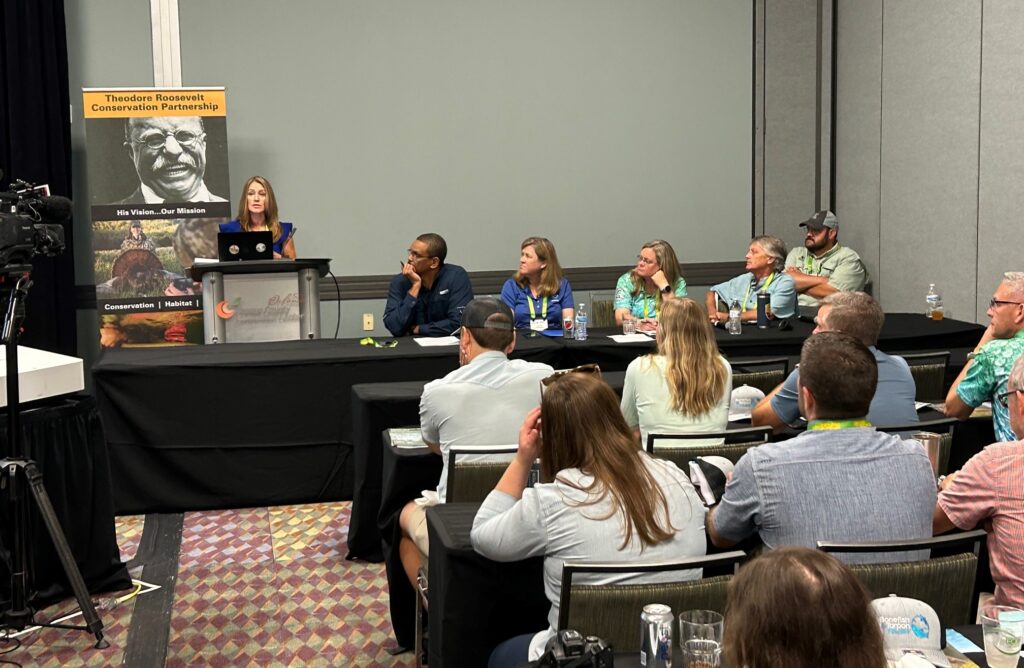
“The last thing we want is to have historical levels of funding available and not be able to get that out on the ground,” said TRCP Center for Marine Fisheries Director Chris Macaluso, who moderated the Conservation Summit panels.
Summit presenters highlighted how, right now, there remains an opportunity to obtain federal funding for conservation projects through the Bipartisan Infrastructure Law and Inflation Reduction Act.
Selberg-Robinson said that a major priority of her agency is focusing on projects that address fish habitat. NOAA already has awarded all round-one applicants for federal funding, with 109 projects to be funded. Competitive grants are still available to address conservation projects, including those that address fish habitat.
TRCP consistently also works to direct private funding to leverage efforts to address priority conservation efforts.
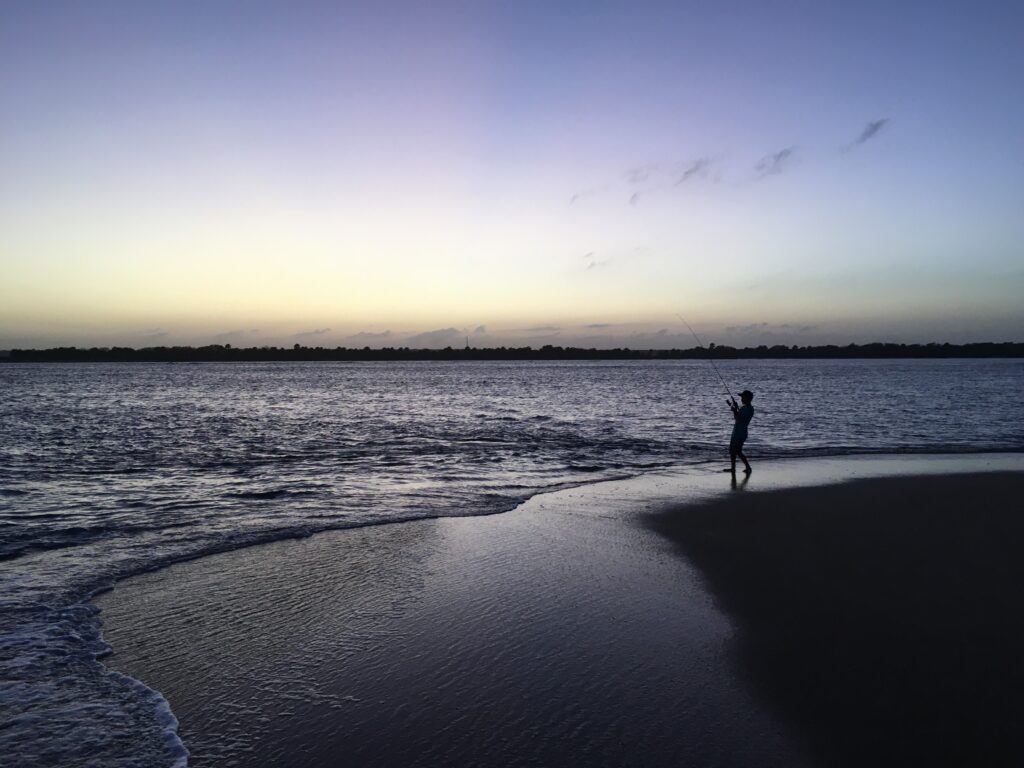
Restoration efforts in the Florida Everglades, which are being addressed by a broad coalition of federal, state, nonprofit, and private groups, including TRCP, provide an optimal example of another theme that emerged in the Conservation Summit: For many conservation goals, work is well underway, but far from the finish line. Construction of the Everglades Agricultural Reservoir began this year in a major milestone for long-term Everglades restoration efforts. The intent is to remedy decades of development and infrastructure wreaking havoc within an ecosystem that not only supports myriad fish and wildlife species within its wetland habitats, but also is necessary to filter contaminants from fresh water flowing south into Florida Bay. The reservoir will allow for capture and treatment of nutrient-laden runoff from Lake Okeechobee, which fuels toxic algal blooms, before water flows into the sportfishing haven of the Bay.
The reservoir won’t be completed for years and will require continued funding support. The TRCP has endeavored to engage with the conservation and sportfishing communities to collectively push for continued funding and focus to complete long-term efforts to restore the Everglades.
“The good news is we are making great progress, and we can’t stop in that progress,” said Dr. Steve Davis, chief science officer for The Everglades Foundation.
Perseverance also has been necessary to help retain as many decommissioned Gulf of Mexico oil and gas platforms as possible, as hundreds are slated for removal despite that these structures have created extensive reef systems populated with all manner of marine life. The artificial reefs both attract fish and produce more biomass, with over 90 species of fish found at Gulf reef sites, according to data from Texas A&M Corpus Christi. Research also shows that fish on the rig reefs grow as fast or faster than those on natural Gulf reefs. For these reasons, it’s important to not only work to save the retired oil and gas platforms now in the Gulf, but also consider the potential of offshore wind turbines to provide similar habitat for sportfish like amberjack, snapper, sheepshead, and cobia.
“We have a good opportunity with wind energy coming up,” said Dr. Matt Streich, associate research scientist, Harte Research Institute for Gulf of Mexico Studies, Texas A&M Corpus Christi. “But we need to keep these structures in the water while there’s still time.”
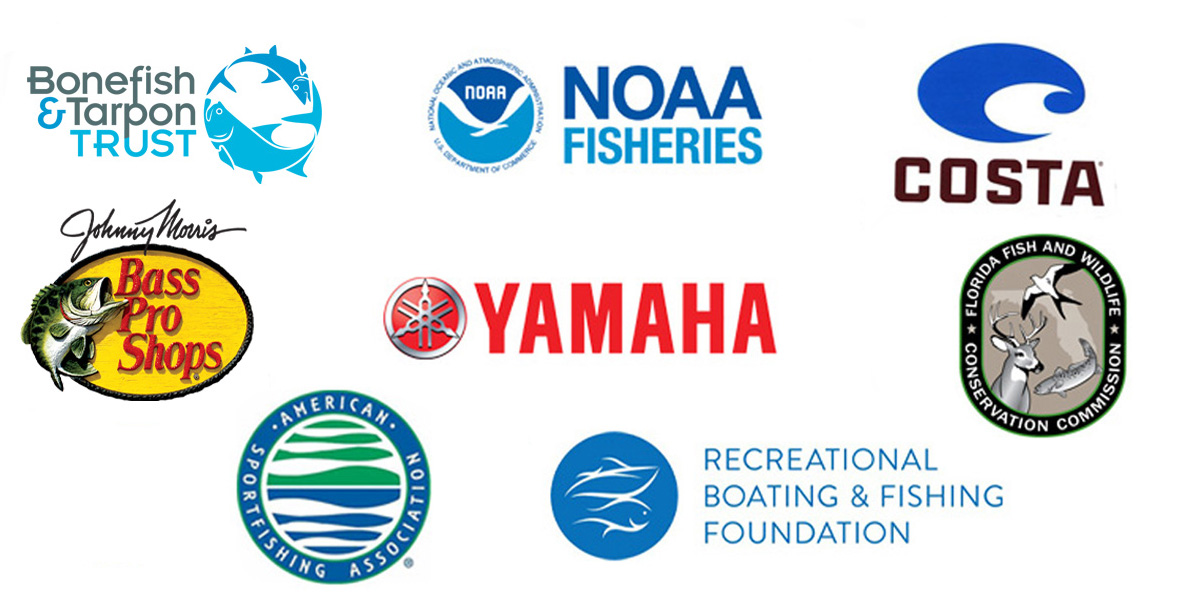
We want to offer a big thank you to all the presenters and participants of the 2023 summit. Also, it wouldn’t have been possible without support from this year’s sponsors:
Modern habitat management will help the iconic mule deer herd rebound
If you’re a fanatical mule deer hunter, you’ve heard of the Wyoming Range, or “Mule Deer Factory,” as Randy Newberg calls it. Every spring, mule deer feed into the lush high country of this iconic mountain range after a winter spent amongst the sage with pronghorn antelope, sage grouse, and other wildlife. This year however, the low country refuge around Rock Springs, and other areas across the state, was battered by arctic temperatures and deep snow that covered the sagebrush these animals depend upon to survive.
The somber views of starving mule deer and pronghorn antelope I passed in early March while driving south to Rock Springs foreshadowed the coming die-off. Roughly 70% of collared does, 60% of collared bucks, and all collared fawns in the herd succumbed to the worst winter in decades. On a recent 80-mile backpack along the length of the Wyoming range, my colleague and Wyoming Community Partnerships Coordinator, Alex Aguirre, shared that he saw just one buck. It will take years for these herds to recover.
We can’t control the weather, but we can prepare for the snow, rain, and drought that will inevitably come. Right now, mule deer and pronghorn are recovering and preparing for next winter by raising fawns and feeding on the highest quality forage to build critical fat reserves. We want healthy big game populations in Wyoming, which means we need healthy habitat. The TRCP and our partners in Wyoming are committed to ensuring proper habitat management on our public lands, and specifically as a pillar of the Bureau of Land Management’s revised Rock Springs Field Office Resource Management Plan.
The Rock Springs Field Office covers over 3.6 million acres of varied landscapes in southwestern Wyoming. At the southern end, hunters and anglers treasure opportunities to pursue trophy-class bull elk and cast for native cutthroat trout in the Greater Little Mountain Area. Further north in the Red Desert, lies critical winter range for the longest known mule deer migration, the 150+ mile Red Desert-to-Hoback Migration. I have fond memories of early spring mornings watching dozens of male sage grouse strut and display on lek sites during the spring mating season as herds of pronghorn grazed in the distance along this ancient corridor. The BLM is in the process of revising the management plan for this field office and we expect to see a draft proposal out for public comment this year. The timing couldn’t be better given all the pressures big game are facing.
The BLM manages close to 30% of all land in Wyoming and it’s important to note that these public acres are also critical drivers of local economies, providing leasing opportunities for energy development, livestock grazing, and other industries in addition to the key habitats they provide for wildlife. Yet, we must not forget that Wyomingites choose to live and work in this great state because of the abundant wildlife resources and wide-open spaces. Ensuring a resilient future for our recovering mule deer and pronghorn populations, while also facilitating thriving local economies, should not be an either-or proposition.
I’ve been fortunate to pursue high country mule deer in summer range along the Red Desert to Hoback Migration route and can attest that these animals have grit. It’s been over 15 years since the BLM initiated the Rock Springs Resource Management Plan revision. In that time our understanding of the ecological processes at play on these landscapes has changed dramatically. I want future generations to have the opportunities I’ve had to be humbled by Wyoming’s mule deer. We can achieve that by ensuring that the Rock Springs Resource Management Plan is updated in a timely manner and in ways that respond to the challenges of today – by including policies that conserve crucial habitat for our big game herds for decades to come.
Photo Credit: Josh Metten
Theodore Roosevelt’s experiences hunting and fishing certainly fueled his passion for conservation, but it seems that a passion for coffee may have powered his mornings. In fact, Roosevelt’s son once said that his father’s coffee cup was “more in the nature of a bathtub.” TRCP has partnered with Afuera Coffee Co. to bring together his two loves: a strong morning brew and a dedication to conservation. With your purchase, you’ll not only enjoy waking up to the rich aroma of this bolder roast—you’ll be supporting the important work of preserving hunting and fishing opportunities for all.
$4 from each bag is donated to the TRCP, to help continue their efforts of safeguarding critical habitats, productive hunting grounds, and favorite fishing holes for future generations.
Learn More
